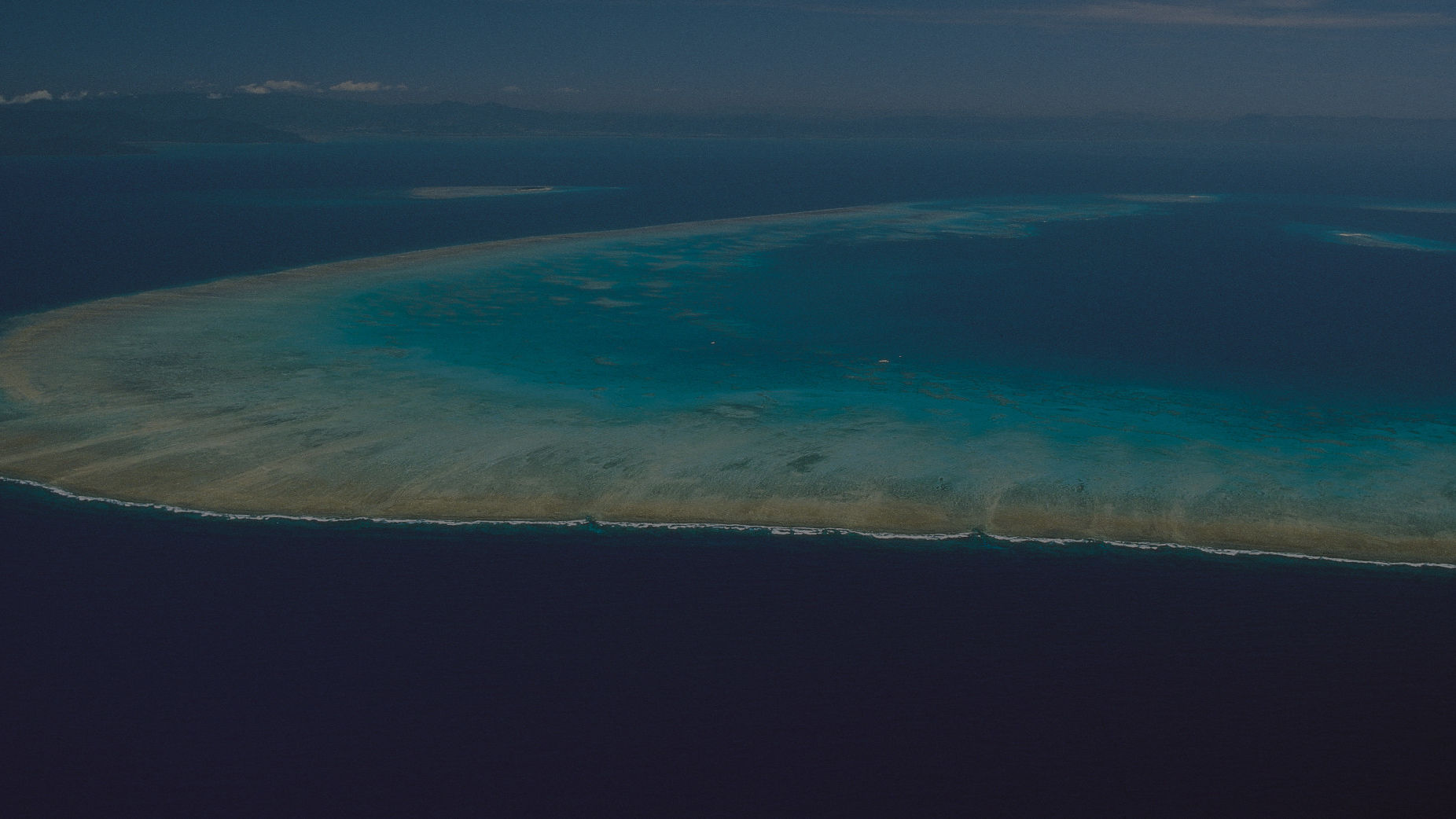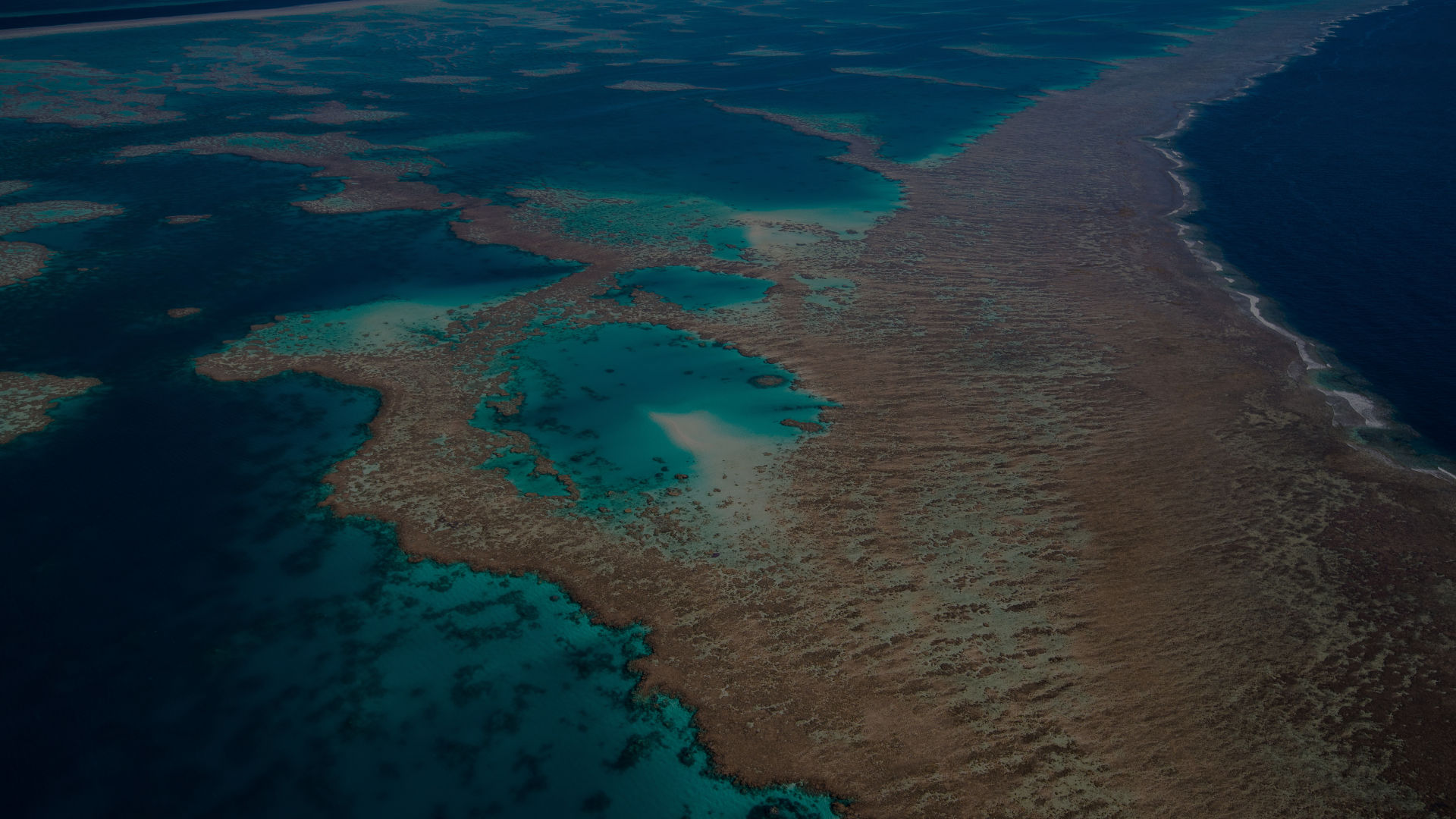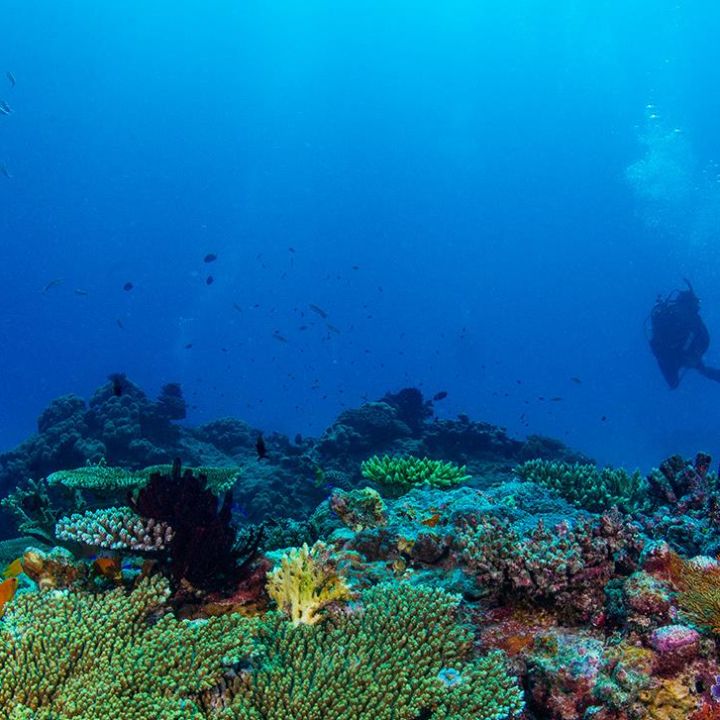Integrated Monitoring and Reporting
Improving health monitoring and reporting of the Great Barrier Reef by supporting the implementation of the Reef 2050 Plan Reef Integrated Monitoring and Reporting Program (RIMREP), to ensure that monitoring and reporting to UNESCO is scientifically robust and investment outcomes are measurable.

#We need to better understand the health and condition of our Reef.
Budget: $40 million
The Reef 2050 Integrated Monitoring and Reporting Program (RIMREP) was launched in 2014 to provide Reef managers with information to guide decisions, track progress against the Reef 2050 Plan, drive better alignment between existing monitoring programs and help fill monitoring and modelling knowledge gaps.
Stage one of RIMREP involved a stocktake of existing Reef monitoring programs, identifying monitoring needs and providing recommendations for establishing a Reef knowledge system. Completed in June 2019, this significant piece of work brought the scientific community together to reach consensus on overall Reef monitoring needs.
The Reef Trust Partnership Integrated Monitoring and Reporting component is prioritising RIMREP stage one recommendations to invest in critical monitoring needs, as well as the early stage development and prototyping of a Reef-wide decision-support system.
#End of Partnership Outcomes
The Partnership’s Integrated Monitoring and Reporting component will result in:
Critical Reef 2050 Integrated Monitoring and Reporting Program data needs or gaps being prioritised and met
An integrated, tactical, strategic Reef decision-support system made operational
#Progress Dashboard
Transparency and accountability are key guiding principles for the Foundation in delivering the Reef Trust Partnership.
A series of interactive dashboards has been developed as part of our Monitoring and Evaluation Plan. The dashboards are updated every six months to demonstrate progress towards meeting End-of-Partnership Outcomes. The following dashboard provides a snapshot of key progress areas that deliver the Integrated Monitoring and Reporting component’s end-of-Partnership outcomes.
Find out more about the RTP progress dashboards in these Frequently Asked Questions.
#Partnership Activities
Our five-year plan for the Integrated Monitoring and Reporting component includes the following Partnership Activities:
Early investment
Budget: $0.57 million
This funding supported essential Reef monitoring to provide an updated baseline assessment of Reef condition and recovery in the northern Great Barrier Reef.
Critical Reef monitoring
Budget: $27.2 million
Transformational investments need sound foundations with adequate baseline monitoring in place. The first phase of the Reef 2050 Integrated Monitoring and Reporting Program has systematically identified critical monitoring activities needed to support an integrated program. This funding is expected to make a significant contribution to addressing priority gaps identified (alongside other funding sources).
Reef-wide Decision-Support System
Budget: $2.9 million
The Reef needs a consistent and transparent approach to decision-making based on data that is current and accurate and on models that enable forecasting and scenario planning. This funding is enabling the scoping, development and prototyping of an operational Reef decision-support platform that is integrated, tactical and strategic.
Technology Transformation Fund
Budget: $5 million
Recognising the perpetual need for more monitoring data (more locations, more often), there is a need for investment in transformative technologies that improve the cost-effectiveness of monitoring programs, either by improving existing approaches or developing new strategies to access the required information. This funding will support the design and implementation of a Technology Transformation Fund, targeting areas that would most benefit from a step-change or transformation.

#Projects
Under the overarching Partnership Activities in our Annual Work Plan sits a suite of Projects.
Projects include both our impact-driven, largely on-ground actions being delivered by our partners, as well as a small number of enabling and supporting activities that together, will achieve the End of Partnership Outcomes.
Below is a summary of the on-ground projects funded so far under the Integrated Monitoring and Reporting component.
#Biophysical Monitoring Projects
These projects address the most critical knowledge needs on Reef species and habitats to guide effective management decisions and to track progress against the Reef 2050 Plan.
Coral reef monitoring in the northern Great Barrier Reef
Project lead: AIMS
This collaborative project took place in 2019 and was designed to fill a critical monitoring gap in the northern Great Barrier Reef. In Partnership with AIMS, coral and fish surveys were undertaken on 18 reefs located in the far north of the Great Barrier Reef Marine Park. This survey provided vital information on pre-bleaching coral cover condition, as well as information on crown-of-thorns starfish abundance and fish communities to Reef managers.
Re-activation of the Fitzroy Marine Monitoring Program site
Project lead: AIMS
The Marine Monitoring Program (MMP) site located in the Fitzroy region will be re-activated as part of this project. Critically important water quality monitoring data will be collected for a four-year period, commencing in the 2020-21 financial year. The MMP aims to assess temporal and spatial trends in in-shore marine water quality and link pollutant concentrations to end-of-catchment loads.
eReefs Phase 5
Project team: AIMS, BOM, CSIRO, DES
The Foundation partnered with the Australian Institute of Marine Science, the Bureau of Meteorology, CSIRO and the Queensland Government to build the world’s largest Reef forecasting and modelling program, known as eReefs, combining satellite technology with powerful models and machine learning to develop the tools needed to save our Reef. The Integrated Monitoring and Reporting component is funding Phase 5 of eReefs over four years.
Great Reef Census
The Great Reef Census is an innovative pilot project that aims to trial new models of scalable data collection to support research and management priorities. It mobilises a flotilla of more than 40 tourism boats, superyachts, fishing vessels and tugboats to collect data across the entire length of the reef. The Great Reef Census is a Citizens of the Great Barrier Reef project, delivered in partnership with UQ, the Great Barrier Reef Marine Park Authority and the Australian Institute of Marine Science.
Developing indicators for condition and recovery capacity of the Reef
Project lead: AIMS
This project will develop the first standardised framework to monitor changes in the condition of coral reef habitats and their capacity to recover from major disruption events such as coral bleaching and cyclones. It will provide Reef Managers with essential information and tools to monitor the resilience of coral habitats and detect the early warning signs of ecological change in the face of climate change
Monitoring distribution, abundance, and threats to inshore dolphins in the Great Barrier Reef
Project lead: SCU
This project will collaborate with Traditional Owners to address critical knowledge gaps on in-shore dolphins in the GBR, including understanding the distribution and abundance of three endangered in-shore dolphin species in the northern GBR. The project will also map and assess the threats to these species across the entire Reef to better understand the conservation status of in-shore dolphins.
Sea Cucumber monitoring
Project lead: Macquarie University
This project will carry-out the first assessment of sea cucumbers on the Great Barrier Reef using underwater drones, remote-sensing and machine learning techniques to better understand the short-term and long-term sustainability of commercial fisheries on sea cucumbers, including protected and threatened species.
Integrated Reef Fish Monitoring Program
Project lead: AIMS
This project will design and implement a large-scale integrated fish monitoring program to address priority knowledge needs on fish species of recreational, commercial, cultural and ecological significance in in-shore reefs, deep water and nursery habitats. It will also develop a series of indicators to monitor the population status and trends of target fish species to guide management decisions and fisheries practices.
Super-charging biosecurity surveillance of cryptic pest fauna in the GBR WHA
Project lead: QLD Department of Environment
The native flora and fauna on Great Barrier Reef Islands are under increasing threat from invasive species. This project will use innovative methods, such as eDNA sampling and artificial intelligence, to improve Reef Managers’ capacity for early detection and prevention of ecologically harmful incursions from invasive rodent and high-risk ant species.
Island Habitat monitoring
Project lead: QLD Department of Environment
This project will use on-ground and remote sensing methods to monitor how island habitats are changing from climate change, severe weather events and biosecurity risks. It will gather critical information on various islands’ regional ecosystems, fauna and cays to guide future management decisions and rehabilitation efforts.
Seabird monitoring
Project lead: QLD Department of Environment
This project will use on-ground surveys, acoustic recordings, and drones to monitor and detect changes in nationally and globally significant seabird populations, including the Little Tern, Bridle Tern, Crested Tern and Brown Booby.
Dugong monitoring
Project Lead: JCU
This project will deliver critical knowledge on dugong population, distribution and abundance trends across the Reef. It will use traditional manned small aircraft surveys and trial new aerial imagery survey technologies.
#Human Dimension Monitoring Projects
A suite of social science projects that will monitor the social, economic, cultural and governance aspects of the Reef to better understand the relationship between human use and actions and the long-term health of the Reef.
Phase 3 of the Social and Economic Long-Term Monitoring Program
Project lead: CSIRO
This project will extend and improve on the foundations of the Social and Economic Long-Term Monitoring Program for the Great Barrier Reef (SELTMP) and will operationalise priority human dimension indicators and monitoring activity identified in RIMREP.
Sustainable use and benefits monitoring
Project lead CSIRO
This project will design a monitoring program to help managing agencies make informed decisions about striking the right balance between sustainable use and long-term conservation. It will look at who uses the Reef, for what purpose and benefit, and how human use impacts the Reef’s ecological, social and economic values.
Monitoring collective capacity and implementation
Project lead: QUT
There are multiple programs, plans and policies underway for the protection and sustainable use of the Reef under the Reef 2050 Plan. This project will develop a monitoring framework to assess how these different components are working together to achieve improved Reef health.
Integrated Reef stewardship monitoring
Project lead: UQ
Community members have an important role to play in contributing to the protection the Great Barrier Reef and maintaining its World Heritage Values. This project will monitor how individuals and community organisations engage in Reef stewardship and explore the causal links between stewardship activities and desired Reef outcomes.
Strong Peoples-Strong Country Framework
This project aims to build capacity for Traditional Owner leadership of monitoring and reporting in the Great Barrier Reef (GBR). First Nations Peoples from over 70 tribal groups maintain rights, interests, and aspirations within the GBR and have long sought to link traditional knowledge and practice into modern decision making.
Phase 2 of the Strong People Strong Country framework builds on the work undertaken in Phase 1 by the Indigenous Heritage Expert Group, supported by CSIRO and funded under RIMREP. This new phase involves the development of a set of objective indicators, which aim to provide information and insights about the condition and trends in Indigenous heritage values in the Reef and its catchments.
#Integration Projects
Projects focused on maximising the impact of the RTP investment by fostering synergies between projects or programs.
Pilot study for water quality sampling on COTS Control vessels
Project lead: JCU
This integration project between the IMR, COTS and Water Quality components will determine whether the COTS Control Program vessels can effectively contribute to understanding water quality conditions on mid-shelf and outer-shelf reefs and validate remote sensing products generated through the Marine Monitoring Program.
#Reef-wide Decision-Support System
Scoping study to map the Reef decision-support landscape
A specialised consultancy has been engaged to conduct a comprehensive analysis of the Reef decision-support landscape, review best practice knowledge and decision systems and recommend a roadmap (or a range of options) to implement a fit-for-purpose decision-support system for the Great Barrier Reef.
This initiative has engaged directly with a concurrent and related activity under the Reef Restoration and Adaptation Program to ensure alignment and avoid duplication.

